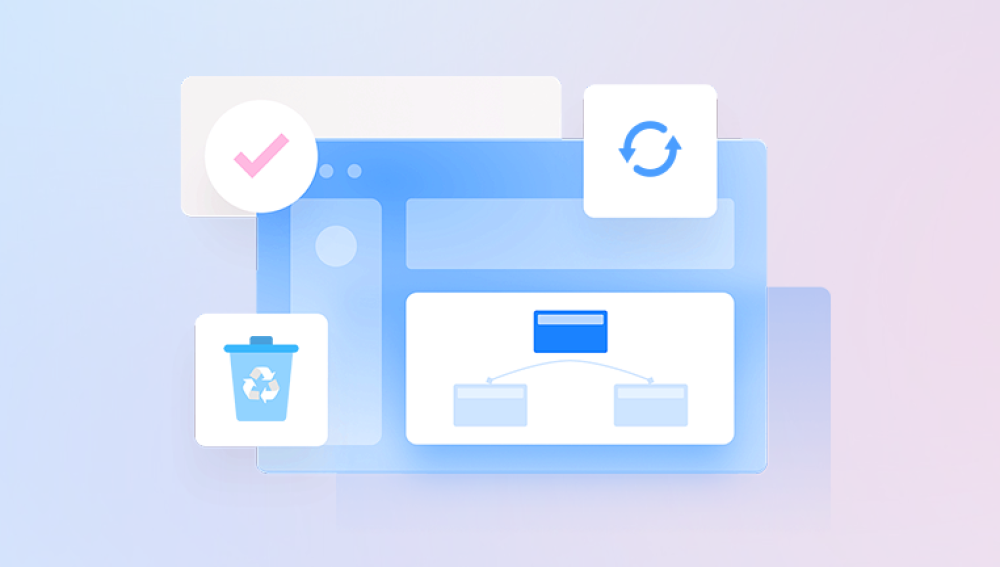The Recycle Bin is a digital safety net for computer users, providing a temporary storage location for deleted files. However, when the Recycle Bin is emptied, or files are permanently deleted using Shift + Delete, recovering those files becomes more challenging. Whether it’s an important document, family photo, or work presentation, losing files can feel catastrophic.
1. How Deletion Works
When you delete a file from your computer, it's not immediately removed from the hard drive. Instead, the operating system marks the file's storage space as available. This is why files can often be recovered even after being "deleted" or the Recycle Bin has been emptied.

Types of Deletion:
Soft Deletion: File moved to the Recycle Bin.
Hard Deletion: File bypasses the Recycle Bin (e.g., Shift + Delete).
Emptied Recycle Bin: All files in the bin are permanently deleted.
Understanding the deletion process helps you determine which recovery method to use.
2. Check for File Backups
Before diving into technical solutions, check if you have any existing backups.
Options:
Windows File History: Go to Control Panel > File History.
Restore Previous Versions: Right-click the folder where the file was stored and select "Restore previous versions."
Cloud Storage Services: Services like OneDrive, Google Drive, or Dropbox often back up files automatically.
External Backup Drives: If you use tools like Windows Backup or third-party software, check your external storage devices.
3. Use Windows File Recovery (Windows 10/11)
Windows File Recovery is a command-line tool from Microsoft that helps recover permanently deleted files.
Steps:
Download from Microsoft Store.
Open Command Prompt as Administrator.
Use the syntax:
winfr C: D: /extensive /n *.docx
This recovers .docx files from the C: drive and saves them to the D: drive.
Customize the command with file paths or specific file types.
4. Use Data Recovery Software
Drecov Data Recovery
Drecov Data Recovery is designed to scan deep into your computer’s storage, detecting and restoring files that traditional recovery tools often miss. Even if your file has been removed from the Recycle Bin and appears gone for good, Drecov Data Recovery can often locate the residual data and reconstruct the file ensuring minimal loss.
Its user-friendly interface makes recovery straightforward for users of all skill levels. Simply launch the software, choose the location where your file was last seen such as your C: drive or Recycle Bin and initiate a scan. Within minutes, the software presents a list of recoverable files, categorized by type and file path. You can then preview documents, images, videos, and more before selecting the items you want to recover.
5. Use System Restore
System Restore won’t recover personal files but may restore system settings or programs that might have handled file recovery.
Steps:
Type "System Restore" in the Start Menu.
Choose a restore point prior to file deletion.
Follow the on-screen instructions.
This is more useful if file loss was due to system malfunction or software issues.
6. Explore Temporary Files and Caches
Windows and other applications may create temporary versions of files.
Look in:
%Temp% folder
Application-specific temp folders (e.g., Word autosave)
Windows shadow copies
To access temp files:
Press Win + R and type %Temp%.
Search for your lost file types.
For Word documents:
Look for .asd, .wbk, or .tmp extensions.
7. Restore from OneDrive (If Synced)
If your PC is synced with OneDrive:
Go to the OneDrive website.
Check the Recycle Bin in the browser.
Restore files directly from the cloud.
Even after local deletion, OneDrive might still retain your files.
8. Use Previous Versions Feature
Windows creates restore points that sometimes include file snapshots.
Steps:
Navigate to the folder where the file was stored.
Right-click and choose "Restore previous versions."
Select from the available versions and restore.
9. Contact Professional Recovery Services
When all else fails, especially for physically damaged drives or sensitive data, consider a professional recovery lab.
What they offer:
Cleanroom facilities
Chip-level recovery
Encrypted drive support
Examples:
Ontrack
DriveSavers
Local IT service centers
Costs vary from $300 to $2000 based on complexity.
10. Preventing Future Data Loss
Being proactive reduces future data recovery headaches.
Best Practices:
Regularly back up data to external or cloud storage.
Enable File History.
Use versioning features in Office 365. Google Docs, etc.
Avoid using Shift + Delete.
Use a reliable UPS to prevent power-related file loss.




